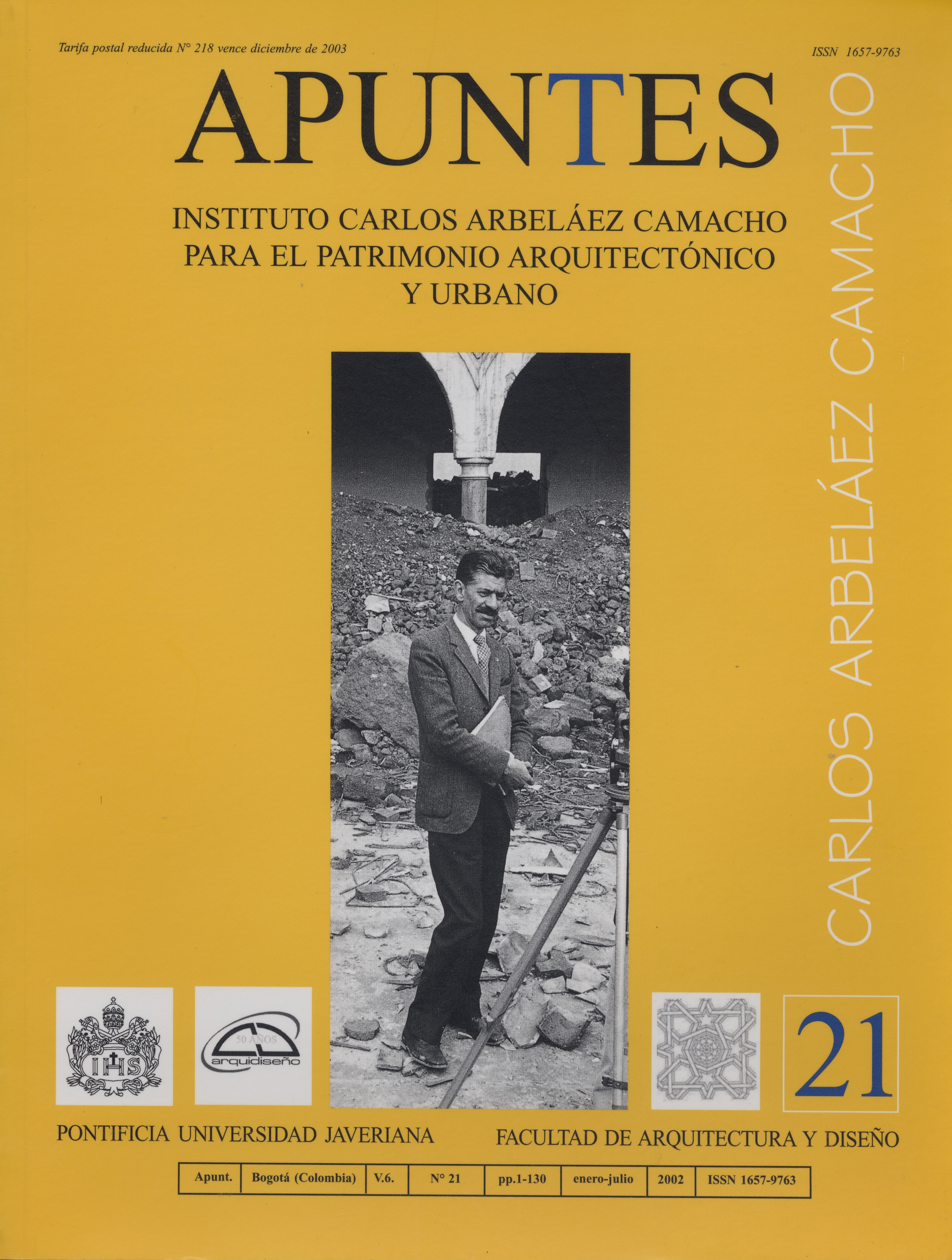Resumen
La existencia del barrio de Las Cruces en Bogotáse puede enfocar desde el punto de vista deldesarrollo físico de la zona urbana o de los factoreshistóricos que intervinieron para propiciaresa configuración. Las Cruces sólo comenzó atomar una configuración como barrio en elsegundo tercio del siglo XIX, formando partede una periferia del centro de la ciudad. Talcronología implica que son los fenómenos socioeconómicosde época llamada" republicana" ,es decir, la configuración de la nueva nación colombiana,los que van a dar una fisonomía particulara las nuevas zonas de la capital del país. Un proceso típico de la época, surgido antetodo en el suroriente de Bogotá, y por ello mismo,en Las Cruces, es el de la producciónindustrial y comercialización de materiales deconstrucción, nuevos y tradicionales. El presenteestudio ubica al barrio como origen y basede producción de algunos de los principalesmateriales de construcción producidos industrialmentea partir de la segunda mitad del sigloXIX en Bogotá. Lo que se podría llamar "la red"de comercialización de estos materiales, paratoda la ciudad, comenzó a tener lugar a partirdel barrio de Las Cruces, dando a éste unadesproporcionada pero interesante importanciasocioeconómica. Las técnicas y materiales de construccionde origen extranjero se sumaron en Bogotá a losque fueron utilizados durante el periodo colonial,a partir de 1860-1870. La industrializaciónposibilitó, entre otros, el proceso de construcciónen serie, a gran escala, "para negocio",con materiales baratos y técnicas constructivassimplificadas, limitada sólo por las circunstanciaseconómicas locales. La economía local resultónotablemente alterada por la importacióny fabricación local de materiales para construccióny decoración, cuyos precios los hicieron defácil acceso a clases sociales medias y bajas. Enparticular, el barrio de Las Cruces, gracias a suproximidad a yacimientos de .arcillas para la fabricaciónmasiva de ladrillo, tuberías de grés yotros productos cerámicos, fue escenario de laaparición de varias fábricas y viviendas para lostrabajadores de éstas, lo cual otorgó al barriouna peculiar configuración urbana.La revista Apuntes se encuentra registrada bajo la licencia Creative Commons Reconocimiento 4.0 Internacional. Por lo tanto, esta obra se puede reproducir, distribuir y comunicar públicamente en formato digital, siempre que se reconozca el nombre de los autores y a la Pontificia Universidad Javeriana. Se permite citar, adaptar, transformar, autoarchivar, republicar y crear a partir del material, para cualquier finalidad (incluso comercial), siempre que se reconozca adecuadamente la autoría, se proporcione un enlace a la obra original y se indique si se han realizado cambios. La Pontificia Universidad Javeriana no retiene los derechos sobre las obras publicadas y los contenidos son responsabilidad exclusiva de los autores, quienes conservan sus derechos morales, intelectuales, de privacidad y publicidad.
El aval sobre la intervención de la obra (revisión, corrección de estilo, traducción, diagramación) y su posterior divulgación se otorga mediante una licencia de uso y no a través de una cesión de derechos, lo que representa que la revista y la Pontificia Universidad Javeriana se eximen de cualquier responsabilidad que se pueda derivar de una mala práctica ética por parte de los autores. En consecuencia de la protección brindada por la licencia de uso, la revista no se encuentra en la obligación de publicar retractaciones o modificar la información ya publicada, a no ser que la errata surja del proceso de gestión editorial. La publicación de contenidos en esta revista no representa regalías para los contribuyentes.


